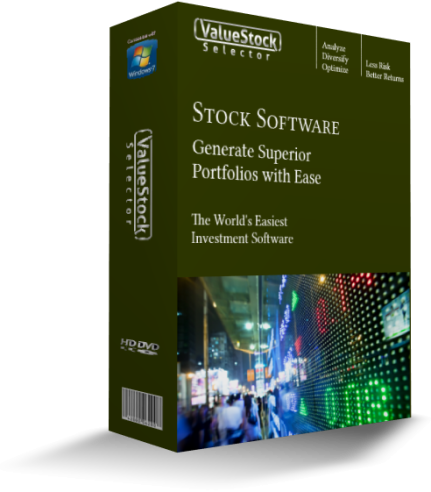Value Investing Finding Undervalued Stocks
Post on: 21 Июнь, 2015 No Comment

By Amy Fontinelle There are two basic steps to finding undervalued stocks: developing a rough list of stocks you want to investigate further because they meet your basic screening criteria, then doing a more in-depth analysis of these stocks by examining the financial data of the selected companies.
The internet has made it easy, fast and free to find the information you need to value a company’s stock. You can search for a company’s financials through online databases such as Edgars and Sedar or find quarterly reports and press releases on the company’s official website. Major financial website (including Investopedia.com) allow investors to get information such as stock price, shares outstanding, earnings per share and current news regarding the comapn/industry. You can also see who the stock’s largest owners are, which insiders have placed trades recently and how many shares they traded. Some websites will also filter stocks according to criteria you set, such as stocks with a certain P/E ratio. These filters can help you come up with a broad list of stocks that you want to research further.
Recall Benjamin Graham’s rule that an undervalued stock is priced at least a third below its intrinsic value. So how do you determine a company’s intrinsic value, especially if you didn’t go to business school and have no idea how to value a company? Open your spreadsheet software and we’ll perform some simple calculations with stock data you can find online.
Basic Value Investing Ratios
You’ve probably heard financial analysts comment that a stock is selling for some number times earnings, such as 30-times earnings or 12.5-times earnings. This means that P, the price the stock is currently trading at, is 30 times higher than E, the company’s annual earnings per share. or EPS. However, for now, all you need to know is that value investors like the P/E ratio to be as low as possible, preferably even in the single digits. The number that results from calculating P/E is called the earnings multiple. So a stock that sells for $50 (P) and generates $2 EPS (E) would have an earnings multiple of 50/2, or 25. A value investor would normally pass on this stock. (For more information, read Investors Beware: There Are 5 Types Of Earnings Per Share. )
Earnings yield is simply the inverse of the earnings multiple. So a stock with an earnings multiple of 5 has an earnings yield of 1/5, or 0.2, more commonly stated as 20%. Since value investors like stocks with a low earnings multiple and earnings yield is the inverse of that number, we want to see a high earnings yield. Ordinarily, a high earnings yield tells investors that the stock is able to generate a large amount of earnings relative to the share price.
Some of the information that will help you find undervalued stocks does not require you do to any math, but it does require you to do research beyond the stock quote.
Insider Purchasing Activity
For our purposes, insiders are the company’s senior managers and directors and any shareholders who own at least 10% of the company’s stock. A company’s managers and directors have unique knowledge about the companies they run, so if they are purchasing its stock, it’s reasonable to assume that the company’s prospects look favorable.
Likewise, investors who own at least 10% of a company’s stock wouldn’t have bought so much if they didn’t see profit potential. If they’re buying even more, they must be seeing greater profit potential. (To learn more, read What Investors Can Learn From Insider Trading .)
On the other hand, a sale of stock by an insider doesn’t necessarily point to bad news about the company’s anticipated performance — the insider might simply need cash for any number of personal reasons. Nonetheless, if mass sell-offs are occurring by insiders, such a situation may warrant further in depth analysis of the reason behind the sale.
How do you know what insiders are doing with their stock holdings? Insiders are required to report their stock purchases to the SEC within two business days. This information is freely available through the SEC website and is reported on SEC Form 4. It is also often available through various financial websites which aggregate this information.
The Art Of Value Investing

The key to buying an undervalued stock that is actually worth more than it is currently trading for is to thoroughly research the company and not just buy a stock because a few of its ratios looks good or because its price has recently dropped. It’s not quite that simple to tell if a stock is a good buy. Applying your common sense and critical thinking skills to stock selection is essential.
Value investor Christopher H. Browne of the legendary value-investing firm Tweedy, Browne recommends asking a series of questions about a company in his book The Little Book of Value Investing. Think about the company’s future prospects — can the company increase its revenue by raising prices? Increasing sales? Lowering expenses? Selling or closing unprofitable divisions? Growing the company? Who are the company’s competitors and how strong are they?
What you think the answers to these questions are is where value investing becomes a bit of an art form. It’s also why you can’t just plug some numbers into a software program to determine the best stocks to invest in.
To increase your odds of accurately answering these questions, it’s wise to buy companies that you understand. Warren Buffett takes this approach. Companies that you understand will most likely be those in industries you have worked in or sell consumer goods products that you are familiar with. If you’ve worked for a biotech company for several years, you probably have a better-than-average understanding of the biotechnology business. And if you buy basic items like cars, clothes, appliances and food, you know a thing or two about consumer goods.
Well known investor Peter Lynch strong advocated such a strategy whereby retail investors can outperform institutions simply by investing in what they know before Wall Street catches on.
Another strategy that value investors favor is to buy companies whose products or services have been in demand for a long time and are likely to continue to be in demand. Looking at stock quotes won’t tell you which companies these are — you’ll have to do some critical thinking. Of course, it is not always possible to predict when innovation will make even a longstanding product or service obsolete, but we can find out how long a company has been in business and research how it has adapted to change over time. At this point it may be worthwhile to analyze management and the effectiveness of corporate governance to determine how the firm reacts to changing business environments.
Next, we’ll talk about how to use the information in companies’ financial statements to find undervalued stocks.














